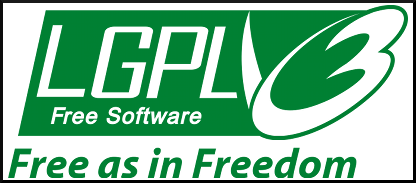Welcome to the Sim-Diasca 2.4.7 Documentation Overview Page
Public Version



We recommend to have a look at the Sim-Diasca General-Purpose Presentation first, in order to discover the engine.
Afterwards, one may refer to the installation guide below.
Alternatively, much shorter versions thereof are:
- either to follow these quickstart instructions:
# Ensure that a recent Erlang version is installed, then: $ git clone https://github.com/Olivier-Boudeville-EDF/Sim-Diasca.git $ cd Sim-Diasca && make test
- or to have a look at the streamlined executable procedure on which we rely for continuous integration
The following public documentation for Sim-Diasca version 2.4.7 is available from here:
| The Sim-Diasca Technical Manual | The richest detailed source of information regarding the engine (except the code itself of course). | [html] | [pdf] |
| The Sim-Diasca Installation Guide | A much detailed installation walkthrough, if needed. | [html] | [pdf] |
| The Sim-Diasca Modeller Guide | Hints to better design simulation models. | [html] | [pdf] |
| The Sim-Diasca Developer Guide | General recommendations when developing services offered by the engine (also applicable for model implementation). | [html] | [pdf] |
| The Sim-Diasca Dataflow HOWTO | For the very specific use cases where a dataflow paradigm would be more suitable than a multi-agent one. | [html] | [pdf] |
| The Sim-Diasca Coupling HOWTO | When having to couple third-party models, instead of writing them directly as Sim-Diasca ones. | [html] | [pdf] |
Seasoned Sim-Diasca users may just bookmark the Sim-Diasca Cheat Sheet.
As an example, this IFL2021 article discusses an application case (the ACME simulator) and, starting from its section 5, offers a walk-through of the full corresponding software stack. See also this overview of the metaprogramming taking place with Sim-Diasca.
One may also be interested in the interface of the public main project and in its wiki.
A mirrored documentation of the lower layers used by Sim-Diasca is available from here as well:
| The Traces Manual | To benefit from convenient, distributed traces in order to collect all information of interest from the simulation. | [html] | [pdf] |
| The WOOPER Manual | So that the model implementation can rely on a suitable object-oriented paradigm. | [html] | [pdf] |
| The Myriad Manual | To take advantage of a general-purpose toolbox providing a range of built-in transverse services. | [html] | [pdf] |
Seasoned WOOPER users may just bookmark the WOOPER Cheat Sheet.
Finally, regarding the overall implementation language, Erlang, one may refer to its searchable online documentation, including its module index.
This public overview page for Sim-Diasca version 2.4.7 has been last updated on Tuesday, February 13, 2024.